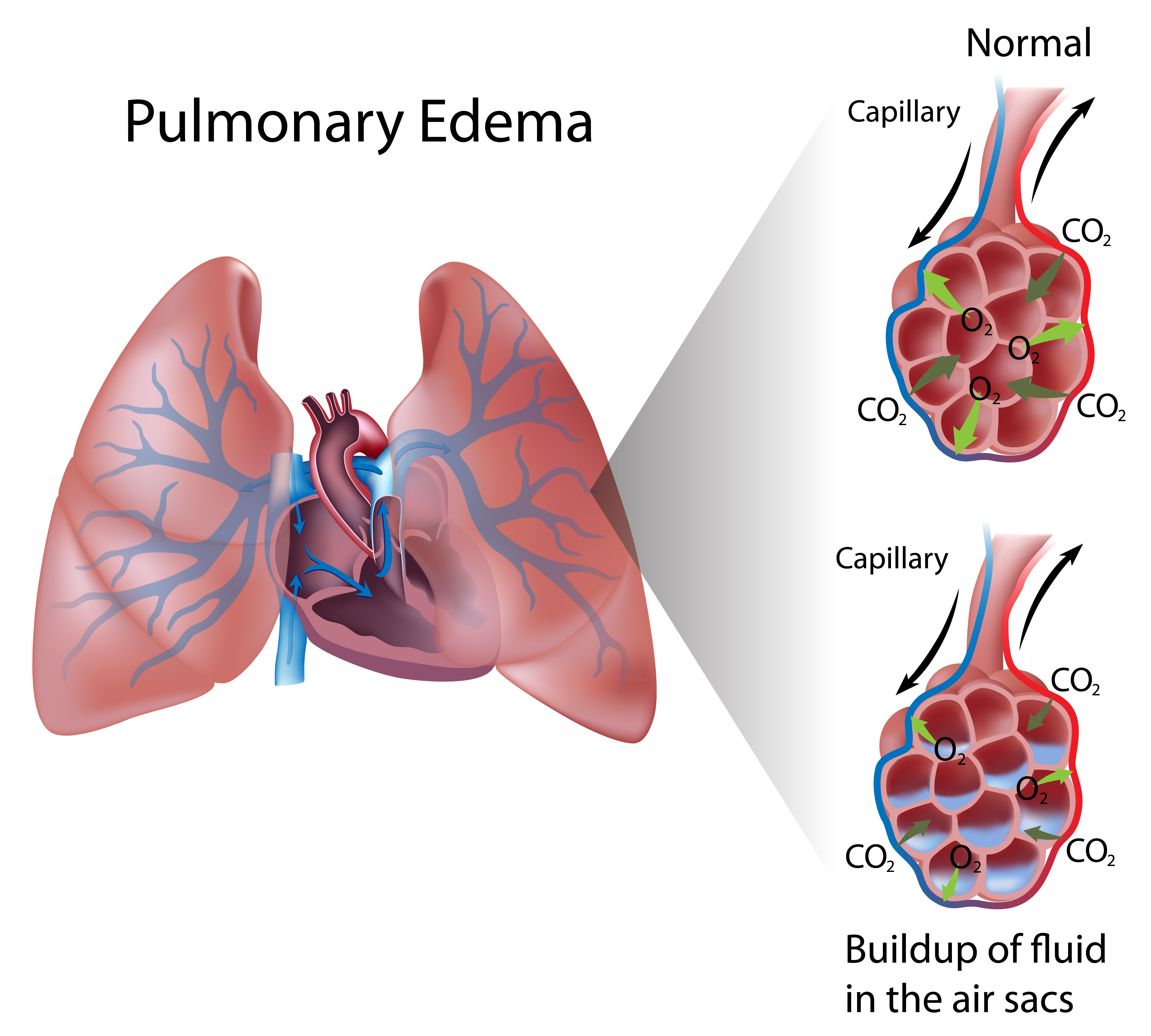Edema fluid. Edema: Types, Causes, Symptoms, and Treatments for Fluid Retention
What are the common types of edema. How can you recognize the symptoms of fluid retention. What causes edema in different parts of the body. Which treatments are effective for managing edema.
Understanding Edema: A Comprehensive Overview
Edema is a medical condition characterized by swelling due to fluid accumulation in bodily tissues. While it commonly affects the skin, edema can also impact various organs, including the brain, lungs, and eyes. This condition can develop gradually or suddenly, and although it’s often benign, it may sometimes indicate a more serious underlying issue.
The severity and location of edema can vary significantly, ranging from mild swelling in the extremities to life-threatening fluid buildup in vital organs. Understanding the different types, causes, and treatments of edema is crucial for effective management and prevention of potential complications.
Common Types of Edema and Their Characteristics
Edema can manifest in various forms, each with its unique set of symptoms and implications. Here are some of the most prevalent types:
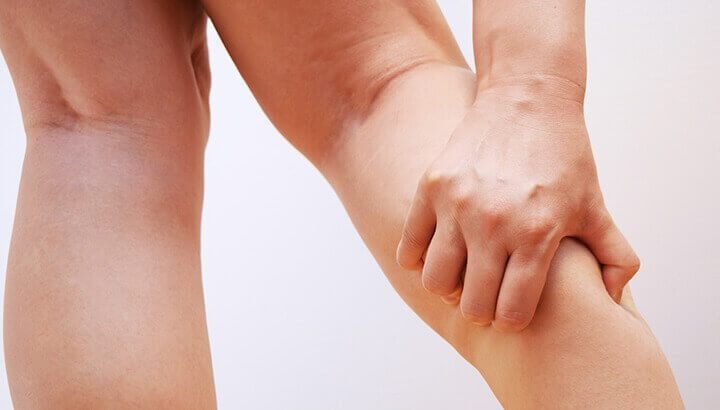
Peripheral Edema
Peripheral edema primarily affects the extremities, such as feet, ankles, legs, hands, and arms. Individuals with this type of edema often experience:
- Visible swelling and puffiness
- Difficulty moving affected body parts
- Skin that appears stretched and shiny
- Dimpling of the skin when pressed (known as pitting edema)
Pulmonary Edema
Pulmonary edema occurs when excess fluid accumulates in the lungs, leading to breathing difficulties. This serious condition can result from congestive heart failure or acute lung injury. Symptoms include:
- Shortness of breath
- Difficulty breathing, especially when lying down
- Wheezing or coughing up pink, frothy sputum
- Rapid, irregular heartbeat
Cerebral Edema
Cerebral edema involves swelling in the brain and can be caused by various factors, many of which are potentially life-threatening. Key symptoms include:
- Severe headache
- Neck pain or stiffness
- Vision changes or loss
- Altered consciousness or mental state
- Nausea and vomiting
- Dizziness or loss of balance
Macular Edema
Macular edema is a complication often associated with diabetic retinopathy. It affects the macula, the part of the eye responsible for central vision. Individuals with macular edema may experience:

- Blurred or wavy central vision
- Changes in color perception
- Difficulty reading or recognizing faces
Identifying the Underlying Causes of Edema
Edema can result from a wide range of factors, from mild, temporary conditions to severe, chronic diseases. Understanding these causes is essential for proper diagnosis and treatment.
Common Causes of Peripheral Edema
- Prolonged sitting or standing
- Pregnancy
- Excessive salt intake
- Venous insufficiency
- Certain medications (e.g., calcium channel blockers, NSAIDs)
- Heart, liver, or kidney disease
Factors Contributing to Pulmonary Edema
- Congestive heart failure
- Acute respiratory distress syndrome (ARDS)
- Pneumonia
- High-altitude exposure
- Inhalation of toxic substances
Triggers for Cerebral Edema
- Traumatic brain injury
- Stroke
- Brain tumors
- Infections (e.g., meningitis, encephalitis)
- High-altitude cerebral edema (HACE)
Risk Factors for Macular Edema
- Diabetic retinopathy
- Age-related macular degeneration
- Retinal vein occlusion
- Inflammatory eye diseases
Recognizing the Symptoms of Edema
While symptoms can vary depending on the type and location of edema, some common signs to watch for include:

- Swelling or puffiness in affected areas
- Skin that appears stretched, shiny, or discolored
- Increased abdominal size
- Stiff or aching joints
- Weight fluctuations
- Reduced urine output
- Changes in vision or eye discomfort
Is edema always visible? Not necessarily. In some cases, such as pulmonary or cerebral edema, the fluid accumulation occurs internally and may not be immediately apparent. These types of edema are often diagnosed through imaging studies or other medical tests.
Effective Treatment Strategies for Managing Edema
The treatment approach for edema depends on its underlying cause and severity. Here are some common strategies used to manage different types of edema:
Medications
- Diuretics: These medications help increase urine production, reducing fluid retention.
- Anti-inflammatory drugs: For edema caused by inflammation, such as in some cases of macular edema.
- Albumin: In cases of severe edema due to liver disease or malnutrition.
Lifestyle Changes
- Reducing salt intake
- Maintaining a healthy weight
- Regular exercise to improve circulation
- Elevating affected limbs
- Wearing compression garments
Specialized Treatments
- Oxygen therapy: For pulmonary edema or certain cases of macular edema
- Manual lymphatic drainage: A specialized massage technique to reduce swelling
- Surgical interventions: In severe cases or for treating underlying conditions
How quickly can edema be resolved? The timeline for improvement varies depending on the cause and chosen treatment. Some cases of mild peripheral edema may improve within days with simple lifestyle changes, while more severe or chronic cases may require ongoing management.

Preventing Edema: Proactive Measures for Better Health
While not all cases of edema can be prevented, several strategies can help reduce the risk or severity of fluid retention:
- Maintain a balanced, low-sodium diet
- Stay physically active and avoid prolonged periods of sitting or standing
- Manage underlying health conditions effectively (e.g., diabetes, heart disease)
- Stay hydrated to promote proper fluid balance
- Avoid tight clothing that may restrict circulation
- Use support stockings if recommended by a healthcare provider
- Monitor medication side effects and consult with a doctor if edema develops
Can lifestyle changes alone prevent all types of edema? While a healthy lifestyle can significantly reduce the risk of many forms of edema, some types, particularly those caused by underlying medical conditions, may require additional medical intervention for prevention and management.
Complications Associated with Untreated Edema
If left untreated, edema can lead to various complications, some of which can be severe:

- Skin ulcers and infections
- Reduced mobility and increased risk of falls
- Scarring or fibrosis of affected tissues
- Increased risk of blood clots
- Decreased blood circulation
- Permanent damage to affected organs (in cases of internal edema)
How serious can complications from edema become? In severe cases, particularly with pulmonary or cerebral edema, complications can be life-threatening if not addressed promptly. Regular monitoring and proper management are crucial for preventing such outcomes.
When to Seek Medical Attention for Edema
While mild edema often resolves on its own, certain symptoms warrant immediate medical attention:
- Sudden or severe swelling, especially if it’s painful
- Difficulty breathing or shortness of breath
- Chest pain or pressure
- Severe headache accompanied by confusion or vision changes
- Swelling in a single limb, which could indicate a blood clot
- Signs of infection in the swollen area, such as warmth, redness, or fever
Should all cases of edema be evaluated by a healthcare professional? While not all instances of mild edema require immediate medical attention, it’s always advisable to consult with a healthcare provider if you’re experiencing persistent or concerning symptoms. They can help determine the underlying cause and recommend appropriate treatment.

Understanding edema, its various types, causes, and potential complications is crucial for effective management and prevention. By recognizing the signs early and taking appropriate action, individuals can minimize the impact of edema on their health and quality of life. Remember, while some cases of edema can be managed with lifestyle changes, others may require medical intervention. Always consult with a healthcare professional for personalized advice and treatment options.
Types, causes, symptoms, and treatment
We include products we think are useful for our readers. If you buy through links on this page, we may earn a small commission Here’s our process.
Medical News Today only shows you brands and products that we stand behind.
Our team thoroughly researches and evaluates the recommendations we make on our site. To establish that the product manufacturers addressed safety and efficacy standards, we:
- Evaluate ingredients and composition: Do they have the potential to cause harm?
- Fact-check all health claims: Do they align with the current body of scientific evidence?
- Assess the brand: Does it operate with integrity and adhere to industry best practices?
We do the research so you can find trusted products for your health and wellness.
Read more about our vetting process.
Was this helpful?
Edema refers to swelling due to fluid buildup in bodily tissues. It is common in the skin but can affect the brain, lungs, and other organs.
It is common in the skin but can affect the brain, lungs, and other organs.
There are different causes and types of edema. For example, pulmonary edema affects the lungs, while pedal edema causes swelling in the feet.
Edema usually starts slowly, but the onset can be sudden. It is a common condition, but it can also be a sign of a serious condition.
This article will explain what edema is and how to recognize it, as well as the different types of and treatments for edema. It will also look at possible complications of the condition.
Share on PinterestEdema, or water retention, causes swelling in the affected part of the body.
Edema refers to swelling and puffiness in different areas of the body.
It most often occurs in the skin, especially in the hands, arms, ankles, legs, and feet. However, it can also affect the muscles, bowel, lungs, eyes, and brain.
Edema mainly occurs in older adults and pregnant people, but anyone can experience it.
Symptoms depend on the underlying cause, but swelling, tightness, and pain are common.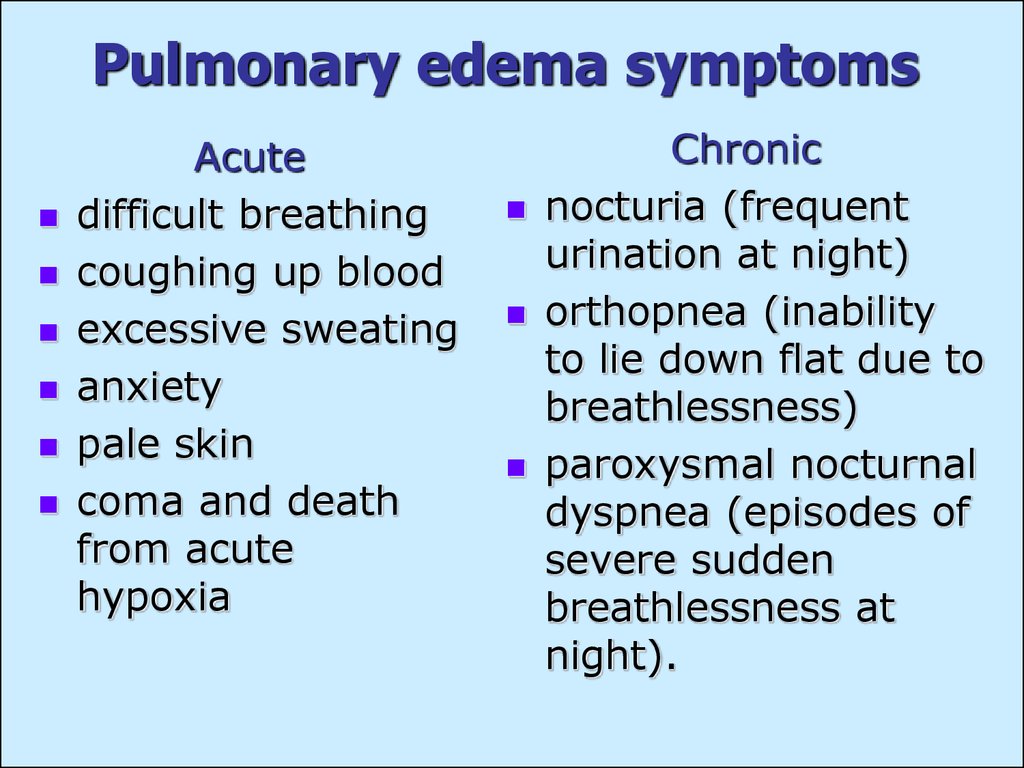
A person with edema may also notice:
- swollen, stretched, and shiny skin
- skin that retains a dimple after a few seconds of pressure
- puffiness of the ankles, face, or eyes
- aching body parts and stiff joints
- weight gain or weight loss
- decreased urine production
- fuller hand and neck veins
- visual anomalies
Symptoms can also depend on the type of edema a person has and which part of the body it affects.
Treatment will also depend on the cause of edema.
Diuretics are a type of medication. They help get rid of excess fluid by increasing the rate of urine production by the kidneys. Different types work in different ways.
A doctor will recommend a specific treatment plan for macular edema, pulmonary edema, and other types of edema.
A person with edema could also try wearing compression garments and doing specific exercises to help.
Share on PinterestWearing compression stockings can help reduce the swelling and discomfort associated with edema.
Some self-care techniques can help reduce or prevent edema.
These include:
- reducing salt intake
- losing weight, if appropriate
- getting regular exercise
- raising the legs when possible to improve circulation
- wearing supporting stockings, which are available to purchase online
- not sitting or standing still for too long
- getting up and walking about regularly when traveling
- avoiding extremes of temperature, such as hot baths, showers, and saunas
- dressing warmly in cold weather
A masseuse or physical therapist may help remove the fluid by stroking firmly in the direction of the heart.
Oxygen may be useful for treating some types of edema. For example, an individual with cardiogenic pulmonary edema may need additional oxygen if they have difficulty taking in enough.
Oxygen delivered through the nose may improve poor vision associated with diabetic macular edema, according to older research from 2004.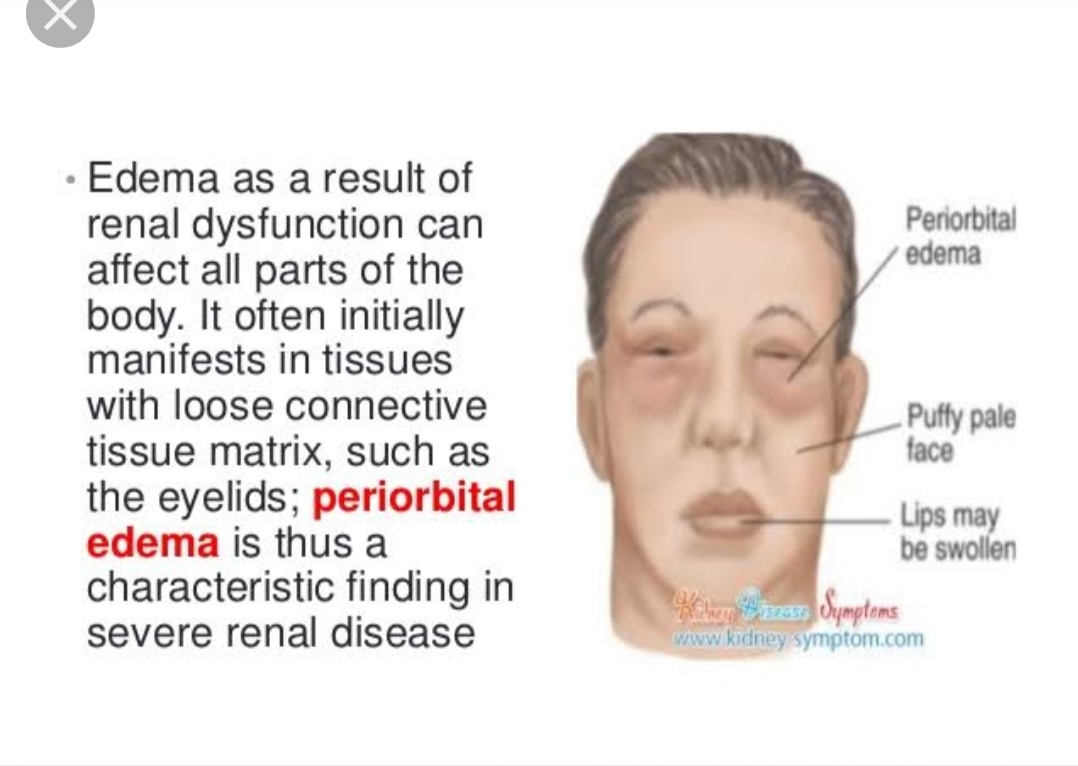
However, some research suggests that hyperbaric oxygen therapy can increase the risk of pulmonary edema.
There are many types of edema. Each one can indicate a range of further health conditions.
Types include:
- Peripheral edema: This affects the feet, ankles, legs, hands, and arms. Symptoms include swelling, puffiness, and difficulty moving certain parts of the body.
- Pulmonary edema: This occurs when excess fluid collects in the lungs, making breathing difficult. This can result from congestive heart failure or acute lung injury. It is a serious condition, it can be a medical emergency, and it can lead to respiratory failure and death.
- Cerebral edema: This occurs in the brain. It can happen for a range of reasons, many of which are potentially life threatening. Symptoms include:
- headache
- neck pain or stiffness
- whole or partial vision loss
- changes in consciousness or mental state
- nausea
- vomiting
- dizziness
- Macular edema: This is a serious complication of diabetic retinopathy.
 Swelling occurs in the macula, which is the part of the eye that enables detailed, central vision. The person may notice changes to their central vision and how they see colors.
Swelling occurs in the macula, which is the part of the eye that enables detailed, central vision. The person may notice changes to their central vision and how they see colors. - Pitting edema: With this type, which can occur in peripheral edema, pressure applied to the skin leaves an indent or pit in the skin.
- Periorbital edema: This refers to inflammation and puffiness around the eye or eyes. The puffiness is due to fluid buildup and is usually temporary.
Edema can occur in other locations as well, but those mentioned above are the most common.
Edema can indicate one of many serious health conditions. It is important for a person to check with a doctor if they are concerned about any kind of swelling.
Edema can result from circulatory problems, infection, tissue death, malnutrition, total body fluid overload, and electrolyte problems.
There are many other possible causes of edema, including the following.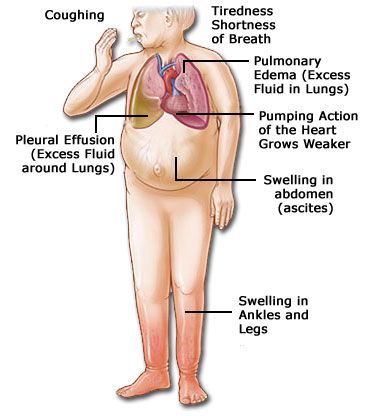
Heart failure
If one or both of the lower chambers of the heart cannot pump blood properly, blood can accumulate in the limbs, causing edema.
Kidney disease or kidney damage
The body of a person with a kidney disorder may not be able to eliminate enough fluid and sodium from the blood. This puts pressure on the blood vessels, which causes some of the liquid to leak out. Swelling can occur around the legs and eyes.
Damage to the glomeruli, which are the capillaries in the kidneys that filter waste and excess fluids from the blood, can result in nephrotic syndrome. One symptom of this is a low level of the protein albumin in the blood. This can lead to edema.
Liver disease
Cirrhosis affects liver function. It can lead to changes in the secretion of hormones and fluid-regulating chemicals and reduced protein production. This causes fluid to leak out of the blood vessels into surrounding tissue.
Cirrhosis also increases pressure within the portal vein, which is the large vein that carries blood from the intestines, spleen, and pancreas to the liver. Edema can occur in the legs and abdominal cavity.
Edema can occur in the legs and abdominal cavity.
Certain medications
Certain medications can also increase the risk of edema.
These include:
- vasodilators, which are drugs that open blood vessels
- calcium channel blockers
- nonsteroidal anti-inflammatory drugs
- estrogens
- some chemotherapy drugs
- some diabetes drugs, such as thiazolidinediones
Pregnancy
During pregnancy, the body releases hormones that encourage fluid retention and the body to retain more sodium and water than usual. The face, hands, lower limbs, and feet may swell.
When a person is resting in a reclined position during pregnancy, the enlarged uterus can press on a vein known as the inferior vena cava. This can obstruct the femoral veins, leading to edema.
During pregnancy, the blood clots more easily. This can increase the risk of deep vein thrombosis (DVT), which is another potential cause of edema.
Eclampsia, which results from pregnancy-induced hypertension, or high blood pressure, can also cause edema.
Dietary factors
A number of dietary factors can also affect the risk of edema, such as:
- consuming too much salt (in people who are susceptible to developing edema)
- malnutrition, wherein edema can result from low protein levels in the blood
- a low intake of vitamin B 1, B 6, and B5
Diabetes
Some complications of diabetes include:
- cardiovascular disease
- acute renal failure
- acute liver failure
- protein-losing enteropathy, which is an intestinal condition that causes protein loss
These complications, and certain medications for diabetes, can result in edema.
Diabetic macular edema is the swelling of the retina in diabetes.
Conditions affecting the brain
Some causes of swelling in the brain include:
- Head injuries: A blow to the head may result in an accumulation of fluids in the brain.
- Stroke: A major stroke can result in brain swelling.

- Brain tumors: A brain tumor will accumulate water around itself, especially as it builds new blood vessels.
Allergies
Some foods and insect bites may cause edema of the face or skin in people who have allergies or sensitivities to them. Severe swelling can be a symptom of anaphylaxis.
Swelling in the throat can close a person’s airway, so they cannot breathe. This is a medical emergency.
Problems with the extremities
Some extremity-related causes of edema include:
- A blood clot: Any blockage, such as a clot in a vein, can prevent the blood from flowing. As pressure increases in the vein, fluids start to leak into the surrounding tissue, causing edema.
- Varicose veins: These usually occur because valves become damaged. Pressure increases in the veins, and they start to bulge. The pressure also increases the risk of fluids leaking into the surrounding tissue.
- A cyst, growth, or tumor: Any lump can cause edema if it presses against a lymph duct or vein.
 As pressure builds up, fluids can leak into surrounding tissue.
As pressure builds up, fluids can leak into surrounding tissue. - Lymphedema: The lymphatic system helps remove excess fluid from tissues. Any damage to this system — from a surgical procedure, an infection, or a tumor, for example — can result in edema.
Miscellaneous conditions
Some other possible causes of edema include:
- Prolonged immobility: People who are immobile for a long time can develop edema in their skin. This can be due both to fluid pooling in gravity dependent areas and the release of antidiuretic hormone from the pituitary.
- High altitude: This, combined with physical exertion, can increase the risk of edema. Acute mountain sickness can lead to high-altitude pulmonary edema or high-altitude cerebral edema.
- Burns and sunburn: The skin reacts to burns by retaining fluid. This causes localized swelling.
- Infection or inflammation: Any tissue that is infected or inflamed can become swollen.
 This is usually most noticeable in the skin.
This is usually most noticeable in the skin. - Menstruation and premenstruation: Hormone levels fluctuate during the menstrual cycle. During the days before menstruation, levels of progesterone are lower, and this may cause fluid retention.
- Birth control pills: Any medication that contains estrogen can cause fluid retention. It is not uncommon for people to gain weight when they first start using birth control pills.
- Menopause: Around menopause, hormone fluctuations can cause fluid retention. Hormone replacement therapy can also trigger edema.
- Thyroid disease: Hormonal imbalances associated with thyroid problems can lead to edema.
Untreated edema can lead to:
- painful swelling, with pain that gets worse
- stiffness and difficulty walking
- stretched, itchy skin
- infection in the area of swelling
- scarring between the layers of tissue
- poor blood circulation
- loss of elasticity in the arteries, veins, and joints
- ulcerations on the skin
Any underlying condition needs medical treatment to prevent it from becoming more serious.
Edema occurs when fluid builds up in the body. This causes swelling, which can sometimes be painful.
There are several potential causes of edema, including pregnancy, heart failure, liver disease, and certain medications. The treatment a person receives will depend on the cause.
Types, causes, symptoms, and treatment
We include products we think are useful for our readers. If you buy through links on this page, we may earn a small commission Here’s our process.
Medical News Today only shows you brands and products that we stand behind.
Our team thoroughly researches and evaluates the recommendations we make on our site. To establish that the product manufacturers addressed safety and efficacy standards, we:
- Evaluate ingredients and composition: Do they have the potential to cause harm?
- Fact-check all health claims: Do they align with the current body of scientific evidence?
- Assess the brand: Does it operate with integrity and adhere to industry best practices?
We do the research so you can find trusted products for your health and wellness.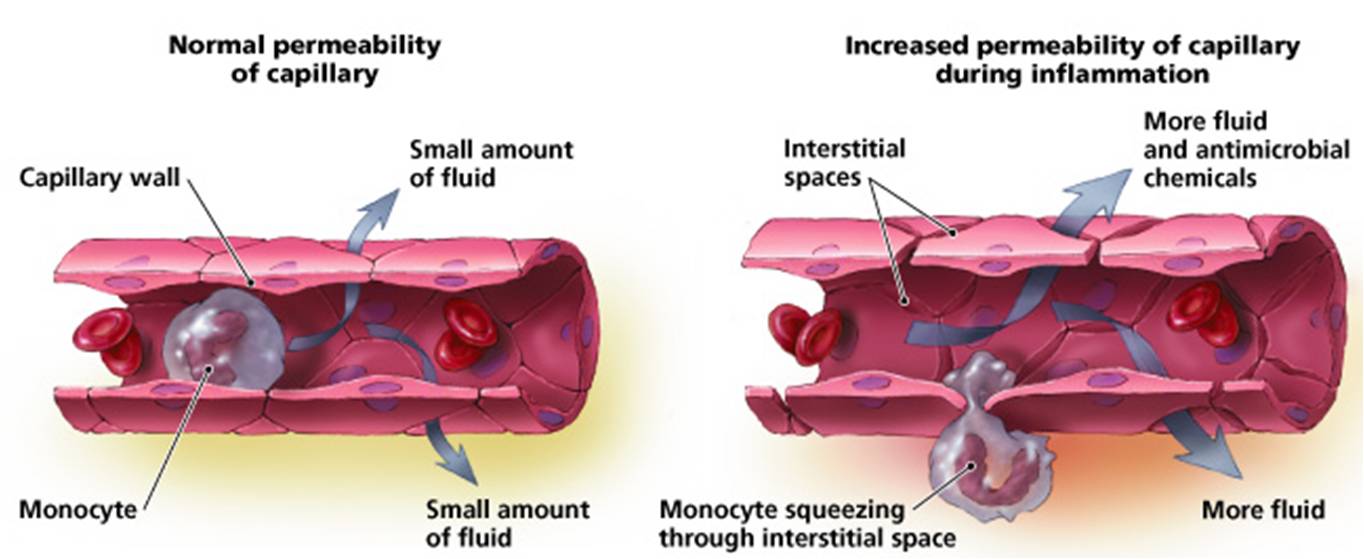
Read more about our vetting process.
Was this helpful?
Edema refers to swelling due to fluid buildup in bodily tissues. It is common in the skin but can affect the brain, lungs, and other organs.
There are different causes and types of edema. For example, pulmonary edema affects the lungs, while pedal edema causes swelling in the feet.
Edema usually starts slowly, but the onset can be sudden. It is a common condition, but it can also be a sign of a serious condition.
This article will explain what edema is and how to recognize it, as well as the different types of and treatments for edema. It will also look at possible complications of the condition.
Share on PinterestEdema, or water retention, causes swelling in the affected part of the body.
Edema refers to swelling and puffiness in different areas of the body.
It most often occurs in the skin, especially in the hands, arms, ankles, legs, and feet. However, it can also affect the muscles, bowel, lungs, eyes, and brain.
Edema mainly occurs in older adults and pregnant people, but anyone can experience it.
Symptoms depend on the underlying cause, but swelling, tightness, and pain are common.
A person with edema may also notice:
- swollen, stretched, and shiny skin
- skin that retains a dimple after a few seconds of pressure
- puffiness of the ankles, face, or eyes
- aching body parts and stiff joints
- weight gain or weight loss
- decreased urine production
- fuller hand and neck veins
- visual anomalies
Symptoms can also depend on the type of edema a person has and which part of the body it affects.
Treatment will also depend on the cause of edema.
Diuretics are a type of medication. They help get rid of excess fluid by increasing the rate of urine production by the kidneys. Different types work in different ways.
A doctor will recommend a specific treatment plan for macular edema, pulmonary edema, and other types of edema.
A person with edema could also try wearing compression garments and doing specific exercises to help.
Share on PinterestWearing compression stockings can help reduce the swelling and discomfort associated with edema.
Some self-care techniques can help reduce or prevent edema.
These include:
- reducing salt intake
- losing weight, if appropriate
- getting regular exercise
- raising the legs when possible to improve circulation
- wearing supporting stockings, which are available to purchase online
- not sitting or standing still for too long
- getting up and walking about regularly when traveling
- avoiding extremes of temperature, such as hot baths, showers, and saunas
- dressing warmly in cold weather
A masseuse or physical therapist may help remove the fluid by stroking firmly in the direction of the heart.
Oxygen may be useful for treating some types of edema. For example, an individual with cardiogenic pulmonary edema may need additional oxygen if they have difficulty taking in enough.
Oxygen delivered through the nose may improve poor vision associated with diabetic macular edema, according to older research from 2004.
However, some research suggests that hyperbaric oxygen therapy can increase the risk of pulmonary edema.
There are many types of edema. Each one can indicate a range of further health conditions.
Types include:
- Peripheral edema: This affects the feet, ankles, legs, hands, and arms. Symptoms include swelling, puffiness, and difficulty moving certain parts of the body.
- Pulmonary edema: This occurs when excess fluid collects in the lungs, making breathing difficult. This can result from congestive heart failure or acute lung injury. It is a serious condition, it can be a medical emergency, and it can lead to respiratory failure and death.
- Cerebral edema: This occurs in the brain. It can happen for a range of reasons, many of which are potentially life threatening.
 Symptoms include:
Symptoms include:- headache
- neck pain or stiffness
- whole or partial vision loss
- changes in consciousness or mental state
- nausea
- vomiting
- dizziness
- Macular edema: This is a serious complication of diabetic retinopathy. Swelling occurs in the macula, which is the part of the eye that enables detailed, central vision. The person may notice changes to their central vision and how they see colors.
- Pitting edema: With this type, which can occur in peripheral edema, pressure applied to the skin leaves an indent or pit in the skin.
- Periorbital edema: This refers to inflammation and puffiness around the eye or eyes. The puffiness is due to fluid buildup and is usually temporary.
Edema can occur in other locations as well, but those mentioned above are the most common.
Edema can indicate one of many serious health conditions. It is important for a person to check with a doctor if they are concerned about any kind of swelling.
Edema can result from circulatory problems, infection, tissue death, malnutrition, total body fluid overload, and electrolyte problems.
There are many other possible causes of edema, including the following.
Heart failure
If one or both of the lower chambers of the heart cannot pump blood properly, blood can accumulate in the limbs, causing edema.
Kidney disease or kidney damage
The body of a person with a kidney disorder may not be able to eliminate enough fluid and sodium from the blood. This puts pressure on the blood vessels, which causes some of the liquid to leak out. Swelling can occur around the legs and eyes.
Damage to the glomeruli, which are the capillaries in the kidneys that filter waste and excess fluids from the blood, can result in nephrotic syndrome. One symptom of this is a low level of the protein albumin in the blood. This can lead to edema.
Liver disease
Cirrhosis affects liver function. It can lead to changes in the secretion of hormones and fluid-regulating chemicals and reduced protein production. This causes fluid to leak out of the blood vessels into surrounding tissue.
This causes fluid to leak out of the blood vessels into surrounding tissue.
Cirrhosis also increases pressure within the portal vein, which is the large vein that carries blood from the intestines, spleen, and pancreas to the liver. Edema can occur in the legs and abdominal cavity.
Certain medications
Certain medications can also increase the risk of edema.
These include:
- vasodilators, which are drugs that open blood vessels
- calcium channel blockers
- nonsteroidal anti-inflammatory drugs
- estrogens
- some chemotherapy drugs
- some diabetes drugs, such as thiazolidinediones
Pregnancy
During pregnancy, the body releases hormones that encourage fluid retention and the body to retain more sodium and water than usual. The face, hands, lower limbs, and feet may swell.
When a person is resting in a reclined position during pregnancy, the enlarged uterus can press on a vein known as the inferior vena cava. This can obstruct the femoral veins, leading to edema.
This can obstruct the femoral veins, leading to edema.
During pregnancy, the blood clots more easily. This can increase the risk of deep vein thrombosis (DVT), which is another potential cause of edema.
Eclampsia, which results from pregnancy-induced hypertension, or high blood pressure, can also cause edema.
Dietary factors
A number of dietary factors can also affect the risk of edema, such as:
- consuming too much salt (in people who are susceptible to developing edema)
- malnutrition, wherein edema can result from low protein levels in the blood
- a low intake of vitamin B 1, B 6, and B5
Diabetes
Some complications of diabetes include:
- cardiovascular disease
- acute renal failure
- acute liver failure
- protein-losing enteropathy, which is an intestinal condition that causes protein loss
These complications, and certain medications for diabetes, can result in edema.
Diabetic macular edema is the swelling of the retina in diabetes.
Conditions affecting the brain
Some causes of swelling in the brain include:
- Head injuries: A blow to the head may result in an accumulation of fluids in the brain.
- Stroke: A major stroke can result in brain swelling.
- Brain tumors: A brain tumor will accumulate water around itself, especially as it builds new blood vessels.
Allergies
Some foods and insect bites may cause edema of the face or skin in people who have allergies or sensitivities to them. Severe swelling can be a symptom of anaphylaxis.
Swelling in the throat can close a person’s airway, so they cannot breathe. This is a medical emergency.
Problems with the extremities
Some extremity-related causes of edema include:
- A blood clot: Any blockage, such as a clot in a vein, can prevent the blood from flowing. As pressure increases in the vein, fluids start to leak into the surrounding tissue, causing edema.

- Varicose veins: These usually occur because valves become damaged. Pressure increases in the veins, and they start to bulge. The pressure also increases the risk of fluids leaking into the surrounding tissue.
- A cyst, growth, or tumor: Any lump can cause edema if it presses against a lymph duct or vein. As pressure builds up, fluids can leak into surrounding tissue.
- Lymphedema: The lymphatic system helps remove excess fluid from tissues. Any damage to this system — from a surgical procedure, an infection, or a tumor, for example — can result in edema.
Miscellaneous conditions
Some other possible causes of edema include:
- Prolonged immobility: People who are immobile for a long time can develop edema in their skin. This can be due both to fluid pooling in gravity dependent areas and the release of antidiuretic hormone from the pituitary.
- High altitude: This, combined with physical exertion, can increase the risk of edema.
 Acute mountain sickness can lead to high-altitude pulmonary edema or high-altitude cerebral edema.
Acute mountain sickness can lead to high-altitude pulmonary edema or high-altitude cerebral edema. - Burns and sunburn: The skin reacts to burns by retaining fluid. This causes localized swelling.
- Infection or inflammation: Any tissue that is infected or inflamed can become swollen. This is usually most noticeable in the skin.
- Menstruation and premenstruation: Hormone levels fluctuate during the menstrual cycle. During the days before menstruation, levels of progesterone are lower, and this may cause fluid retention.
- Birth control pills: Any medication that contains estrogen can cause fluid retention. It is not uncommon for people to gain weight when they first start using birth control pills.
- Menopause: Around menopause, hormone fluctuations can cause fluid retention. Hormone replacement therapy can also trigger edema.
- Thyroid disease: Hormonal imbalances associated with thyroid problems can lead to edema.

Untreated edema can lead to:
- painful swelling, with pain that gets worse
- stiffness and difficulty walking
- stretched, itchy skin
- infection in the area of swelling
- scarring between the layers of tissue
- poor blood circulation
- loss of elasticity in the arteries, veins, and joints
- ulcerations on the skin
Any underlying condition needs medical treatment to prevent it from becoming more serious.
Edema occurs when fluid builds up in the body. This causes swelling, which can sometimes be painful.
There are several potential causes of edema, including pregnancy, heart failure, liver disease, and certain medications. The treatment a person receives will depend on the cause.
EDUCATION • Big Russian Encyclopedia
Authors: PF Litvitsky
EDUCATION, a form of disturbance of the body’s water balance, characterized by the accumulation of fluid in the intercellular space and in body cavities. The edematous fluid can be different in consistency and composition – in the form of transudate, exudate, mucus (the so-called mucous O., or myxedema). O. are distinguished by their localization, prevalence, rate of development, and origin (pathogenesis). By localization, O. of the subcutaneous tissue (the so-called anasarca) and the accumulation of edematous fluid in decomp. body cavities – ascites, hydrocephalus, hydrothorax (in the pleural cavity). According to the prevalence, O. can be local (in a tissue or a separate organ with inflammation or an allergic reaction) and general (for example, with liver failure or nephrotic syndrome ). According to the rate of development, they speak of fulminant O., which develops within a few seconds (for example, after an insect or snake bite), acute O., which occurs within an hour (O. of the lungs with acute myocardial infarction, etc.), and chronic O. , which is formed within a few days or weeks (for example, due to hunger). According to the mechanism of development, hemodynamic, lymphogenous, oncotic, osmotic, and membranogenic O.
The edematous fluid can be different in consistency and composition – in the form of transudate, exudate, mucus (the so-called mucous O., or myxedema). O. are distinguished by their localization, prevalence, rate of development, and origin (pathogenesis). By localization, O. of the subcutaneous tissue (the so-called anasarca) and the accumulation of edematous fluid in decomp. body cavities – ascites, hydrocephalus, hydrothorax (in the pleural cavity). According to the prevalence, O. can be local (in a tissue or a separate organ with inflammation or an allergic reaction) and general (for example, with liver failure or nephrotic syndrome ). According to the rate of development, they speak of fulminant O., which develops within a few seconds (for example, after an insect or snake bite), acute O., which occurs within an hour (O. of the lungs with acute myocardial infarction, etc.), and chronic O. , which is formed within a few days or weeks (for example, due to hunger). According to the mechanism of development, hemodynamic, lymphogenous, oncotic, osmotic, and membranogenic O. are distinguished. Hemodynamic (hydrodynamic, hydrostatic, mechanical) O. is formed as a result of an increase in the so-called. effective hydrostatic. pressure on the vessel wall (for example, with heart failure) or an increase in the volume of circulating blood (in particular, with polycythemia). Lymphogenic (lymphatic.) O. occurs due to difficulty in the outflow of lymph during mechanical. obstacles (tumor, scar, embolism, including parasites, for example, filariae, etc.), increasing the center. venous pressure (eg, with heart failure). Oncotic (hypoalbuminemic, hypoproteinemic) O. develops with general or protein starvation, a decrease in albumin synthesis in the liver, increased protein loss during nephrosis, extensive burns, etc., as well as with an increase in the content of albumins in the interstitial fluid as a result of inflammation or local allergies. . reactions, getting into the body of poisons of insects, reptiles, bacteria. Osmotic O. arises as a result of an increase in osmolality of the interstitial (interstitial; cf.
are distinguished. Hemodynamic (hydrodynamic, hydrostatic, mechanical) O. is formed as a result of an increase in the so-called. effective hydrostatic. pressure on the vessel wall (for example, with heart failure) or an increase in the volume of circulating blood (in particular, with polycythemia). Lymphogenic (lymphatic.) O. occurs due to difficulty in the outflow of lymph during mechanical. obstacles (tumor, scar, embolism, including parasites, for example, filariae, etc.), increasing the center. venous pressure (eg, with heart failure). Oncotic (hypoalbuminemic, hypoproteinemic) O. develops with general or protein starvation, a decrease in albumin synthesis in the liver, increased protein loss during nephrosis, extensive burns, etc., as well as with an increase in the content of albumins in the interstitial fluid as a result of inflammation or local allergies. . reactions, getting into the body of poisons of insects, reptiles, bacteria. Osmotic O. arises as a result of an increase in osmolality of the interstitial (interstitial; cf. interstitial cells ) liquid (for example, when osmotically active substances enter it from damaged cells – sodium, potassium, calcium, glucose, lactic acid, nitrogenous compounds, etc.) or a decrease in blood plasma osmolality (for example, with an increase intracranial pressure, damage to the hypothalamus, after suffering encephalitis). Membrane O. are associated with an increase in the permeability of the walls of the vessels of the microcirculatory bed for water, low- and high-molecular substances (chap. arr. albumins). The most common cause is acidosis. In the clinical practice, as a rule, O. of the mixed type are observed, in connection with which, in each case, the initial (starting, primary) pathogenetic is distinguished. factor in this patient and pathogenetic. the factors which are included in process of development of O. for the second time. O.’s treatment can be etiotropic (for example, treatment of heart failure, diseases of the kidneys, liver), pathogenetic (blocking of the main mechanisms of O.
interstitial cells ) liquid (for example, when osmotically active substances enter it from damaged cells – sodium, potassium, calcium, glucose, lactic acid, nitrogenous compounds, etc.) or a decrease in blood plasma osmolality (for example, with an increase intracranial pressure, damage to the hypothalamus, after suffering encephalitis). Membrane O. are associated with an increase in the permeability of the walls of the vessels of the microcirculatory bed for water, low- and high-molecular substances (chap. arr. albumins). The most common cause is acidosis. In the clinical practice, as a rule, O. of the mixed type are observed, in connection with which, in each case, the initial (starting, primary) pathogenetic is distinguished. factor in this patient and pathogenetic. the factors which are included in process of development of O. for the second time. O.’s treatment can be etiotropic (for example, treatment of heart failure, diseases of the kidneys, liver), pathogenetic (blocking of the main mechanisms of O. ‘s development – normalization of oncotic blood plasma pressure, restoration of the permeability of the walls of microvessels, elimination of lymphatic insufficiency, etc.) and symptomatic (for example, a decrease in the degree of hypoxia in O. of the lungs, the elimination of ascites in heart failure or portal hypertension, the removal of edematous fluid from the pleural and articular cavities).
‘s development – normalization of oncotic blood plasma pressure, restoration of the permeability of the walls of microvessels, elimination of lymphatic insufficiency, etc.) and symptomatic (for example, a decrease in the degree of hypoxia in O. of the lungs, the elimination of ascites in heart failure or portal hypertension, the removal of edematous fluid from the pleural and articular cavities).
Cancer lung fluid
General information about the disease
The accumulation of fluid in the lungs that occurs during the oncological process may indicate several conditions – pulmonary edema, exudative pleurisy, or even a side effect of chemotherapy. With pulmonary edema, fluid accumulates in the alveoli, which are involved in gas exchange. It makes it difficult to fully breathe, being the main mechanism of the pathological condition.
Exudative pleurisy is characterized by the formation of excess effusion between the sheets of the pleura – a connective tissue plate lining the lung surface and chest from its inner side.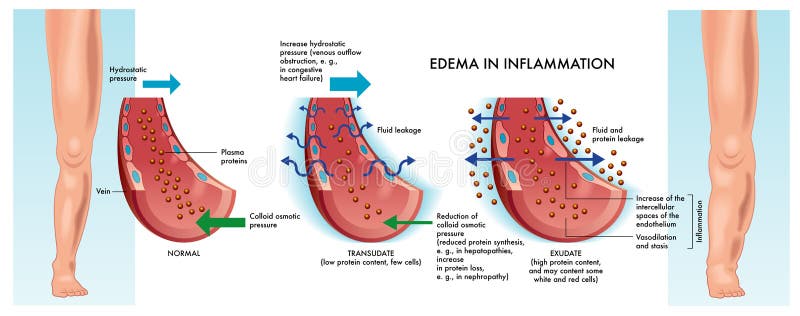 The pleura is affected by metastases from the primary focus located in the abdominal organs (stomach, intestines), pelvic organs (uterus, ovaries).
The pleura is affected by metastases from the primary focus located in the abdominal organs (stomach, intestines), pelvic organs (uterus, ovaries).
The fluid in the alveoli accumulates quickly or gradually, in connection with which there is an acute and chronic form of edema.
Symptoms of an acute attack:
- marked lack of air;
- difficulty breathing;
- anxiety;
- loose cough streaked with blood;
- retrosternal pain;
- rapid pulse (tachycardia) or disruption of the rhythm (arrhythmia).
Symptoms of fluid in the lungs in the chronic form of pulmonary edema and exudative pleurisy are similar to each other:
- fatigue;
- increasing dyspnea;
- productive cough.
Pleurisy is accompanied by bouts of fever, night sweats. Patients with chronic pulmonary edema wake up at night from suffocation.
How to treat a symptom
First aid for the recurrent nature of exudative pleurisy is surgical intervention. The operation consists in removing the pleural membrane from the inside of the chest cavity.
The operation consists in removing the pleural membrane from the inside of the chest cavity.
Emergency care for acute pulmonary edema is the supply of oxygen through a special mask or connection to a ventilator. Diuretic drugs (diuretics), which remove excess fluid from the alveoli, will help reduce symptoms. Narcotic analgesics (morphine) can help with anxiety and feeling short of breath. Vasodilators – drugs that eliminate vascular spasm and reduce cardiac stress. In a hypertensive crisis (high blood pressure numbers), the patient is offered antihypertensive therapy – drugs that reduce pressure.
If the symptom is caused by side effects of chemotherapy, the doctor will change the medication.
Possible complications
The consequences of fluid accumulated in the lungs can be quite serious. Exacerbation of chronic pulmonary edema or advanced exudative pleurisy is life-threatening. The bronchopulmonary system cannot fully function due to increasing oxygen starvation.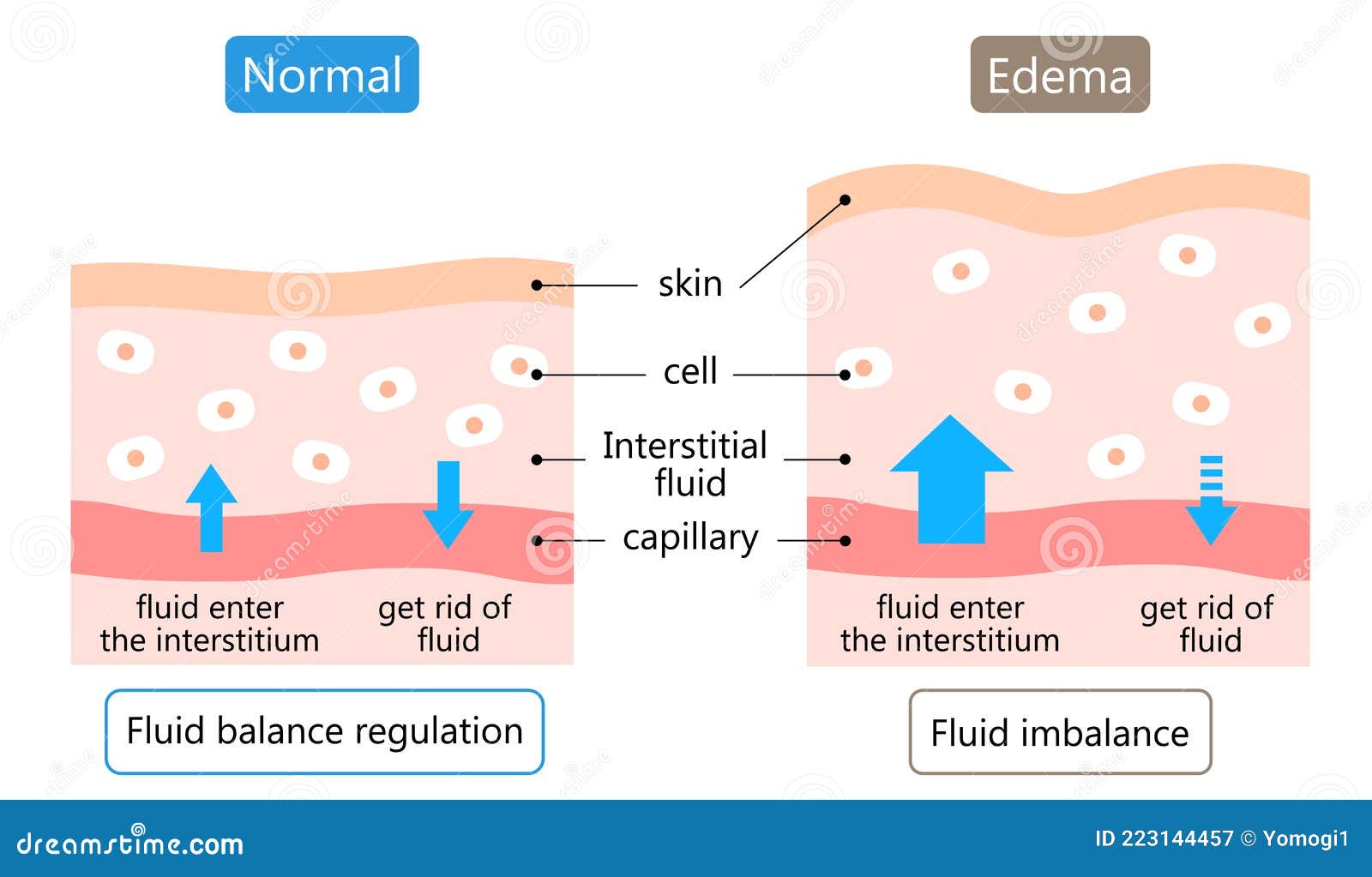
The lack of timely medical care leads to a number of the following complications:
- Mediastinal compression. The mediastinum is a group of organs lying between the two pleural cavities.
- Airway obstruction due to excessive foam.
- Formation between the pleural sheets of purulent contents or contents mixed with blood.
- Choking – labored and oppressed breathing.
- Exacerbation of heart failure with arrhythmia and periodic hypertensive crises.
What causes fluid to accumulate in the lungs in cancer
Fluid in the lungs with malignant neoplasms occurs for various reasons. If we are talking about pulmonary edema, then 2 main groups of underlying causes can be indicated: cardiogenic and non-cardiogenic. Cardiogenic (associated with cardiac dysfunction) include exacerbations of chronic heart problems, pulmonary embolism, cardiomyopathy. Non-cardiogenic causes – septic process, congestive pneumonia, side effects of chemotherapeutic drugs, exposure to ionizing radiation.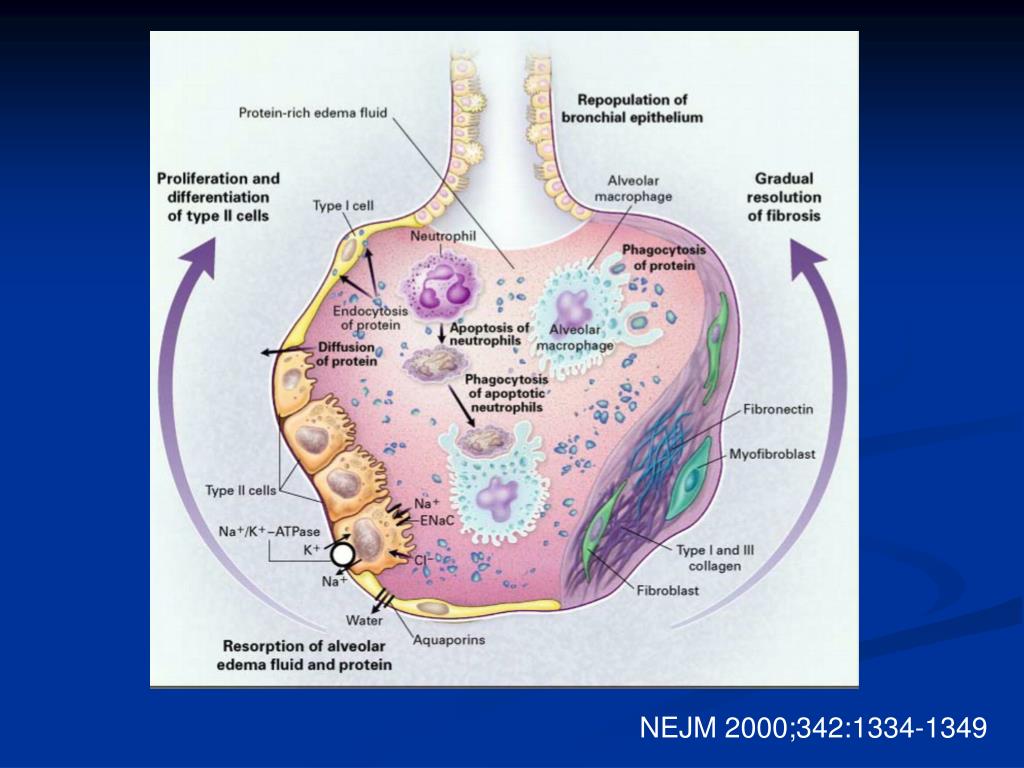 In oncopathology, both options are found.
In oncopathology, both options are found.
Exudative pleurisy is a characteristic feature of the late stage of cancer. Most often, pleurisy occurs with neoplasms of the lungs, mammary glands, ovaries. The effusion comes out between the sheets of the pleura in the following cases:
- metastatic foci appeared in the lymph nodes located near the bronchi;
- the tumor blocks the bronchial lumen;
- Oncology provoked pneumonia.
Fluid in the lungs can accumulate after chest irradiation, treatment with certain chemotherapy drugs (methotrexate, cyclophosphamide).
Diagnostic methods in Medscan
The doctor determines the pathological condition using physical methods – percussion and auscultation. With increasing edema, wheezing is heard over the entire surface of the lungs with a phonendoscope.
The Medscan Diagnostic Center uses the following methods to determine excess fluid in the lungs in oncology:
- Chest x-ray.
 The study will show a significant amount of fluid.
The study will show a significant amount of fluid. - CT, MRI – more accurate methods. They allow assessing the condition of the lung tissues, identifying the affected lymph nodes near the bronchi or in the mediastinum.
- Immunohistochemical analysis. It is carried out for a detailed study of pleural effusion. Immunohistochemistry helps to identify and characterize malignant cells based on the interaction of the immune complex of antibodies and antigens.
- Thoracoscopy is a method that allows you to examine the chest using a special tube (thoracoscope). In combination with an immunohistochemical study, it diagnoses a malignant neoplasm in almost 100% of cases.
Medscan Diagnostic Center has expert-level equipment. We offer our patients modern and high-precision laboratory and instrumental diagnostic methods.
Methods of treatment in Medscan
The Medscan clinic provides all the necessary treatment used in oncology of the lungs, pelvic organs and other internal organs:
- surgery;
- radiotherapy;
- chemotherapy;
- targeted therapy;
- immunotherapy;
- hormone therapy.


 Swelling occurs in the macula, which is the part of the eye that enables detailed, central vision. The person may notice changes to their central vision and how they see colors.
Swelling occurs in the macula, which is the part of the eye that enables detailed, central vision. The person may notice changes to their central vision and how they see colors.
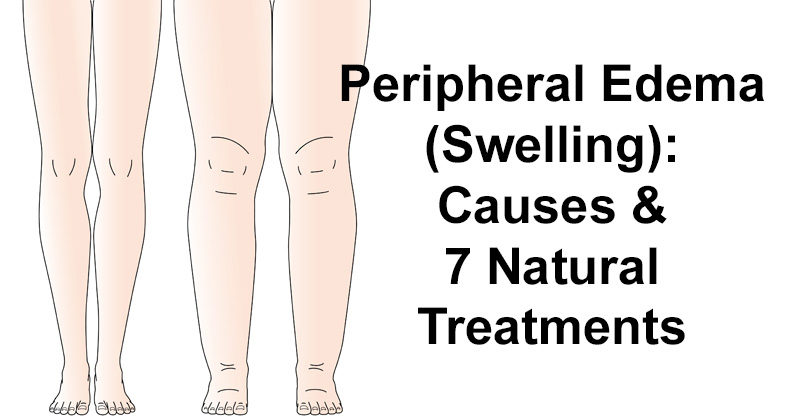 As pressure builds up, fluids can leak into surrounding tissue.
As pressure builds up, fluids can leak into surrounding tissue. This is usually most noticeable in the skin.
This is usually most noticeable in the skin. Symptoms include:
Symptoms include:
 Acute mountain sickness can lead to high-altitude pulmonary edema or high-altitude cerebral edema.
Acute mountain sickness can lead to high-altitude pulmonary edema or high-altitude cerebral edema.
 The study will show a significant amount of fluid.
The study will show a significant amount of fluid.